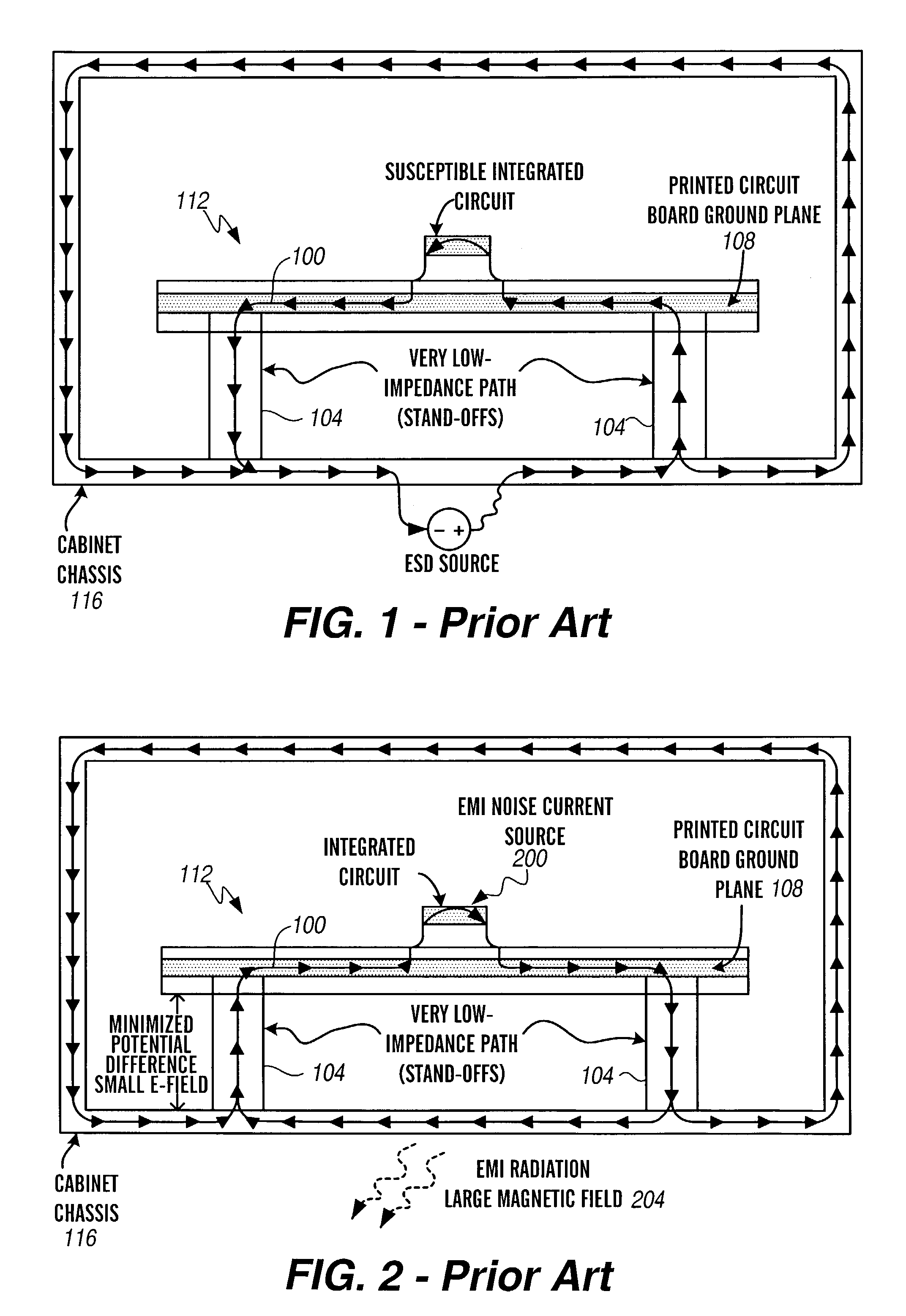EMC/ESD mitigation module
- Summary
- Abstract
- Description
- Claims
- Application Information
AI Technical Summary
Benefits of technology
Problems solved by technology
Method used
Image
Examples
first embodiment
[0029]FIGS. 3 and 4 depict a cylindrical through-hole mitigation module according to the present invention. The mitigation module 300 comprises first and second (co-axially aligned) ferrite cores 304a and b, first and second (co-axially aligned) dielectric materials 308a and b surrounding the peripheries of the first and second ferrite cores 304a and b, respectively, first and second (co-axially aligned) outer conductive (e.g., metal) shells 312a and b surrounding the peripheries of the first and second dielectric materials 308a and b, respectively, and a conductive (e.g., metal) annular spacer disk 316 positioned between the first and second sections 320a and b of the module. The first and second ferrite cores 304a and b, first and second dielectric materials 308a and b, first and second outer conductive shells 312a and b, and conductive spacer disk 316 are, in one configuration, co-axially aligned along line 324.
[0030]The electrical behavior of the module 300 is depicted in FIG. 5...
second embodiment
[0040]FIG. 10 shows a module according to the present invention that is particularly useful as a surface mountable module design that can be used in a tape-and-reel installation technique. The module 1000 comprises co-axially aligned (continuous) ferrite core 1004, dielectric material 1008, first and second outer conductive shells 1012a and b, and insulative (annular) spacer ring 1016. A washer-shaped air gap 1010 (or insulative material) exists that is coplanar with the insulative annular ring. This air gap physically separates the two dielectric materials of the two capacitors and provides a much smaller capacitance than that capacitance provided by the conductive shell-dielectric-ferrite structure. As will be appreciated, the air gap 1010 and ring 1016 can be placed by a washer-shaped insulative annular ring extending from the outer surface of the shells 1012a and b to the outer surface of the core 1004. This design can be more manufacturable than an air gap and provide a high de...
third embodiment
[0044]FIG. 11 depicts a PCB mounting design according to the present invention. In the design, the PCB ground plane 108 is in contact with standoff 1100, which in turn is in contact with the chassis 116. The first and second sections 1104a and 1104b of the standoff are electrically conductive while the central section 1110 of the standoff is electrically insulating. The mitigation module 300 or 1100 is positioned adjacent to the central section 1108 and is in electrical contact with the first and second sections 1104a and 1104b. This configuration of components produces the electromagnetic current path 1108 shown.
PUM
 Login to View More
Login to View More Abstract
Description
Claims
Application Information
 Login to View More
Login to View More - R&D
- Intellectual Property
- Life Sciences
- Materials
- Tech Scout
- Unparalleled Data Quality
- Higher Quality Content
- 60% Fewer Hallucinations
Browse by: Latest US Patents, China's latest patents, Technical Efficacy Thesaurus, Application Domain, Technology Topic, Popular Technical Reports.
© 2025 PatSnap. All rights reserved.Legal|Privacy policy|Modern Slavery Act Transparency Statement|Sitemap|About US| Contact US: help@patsnap.com



